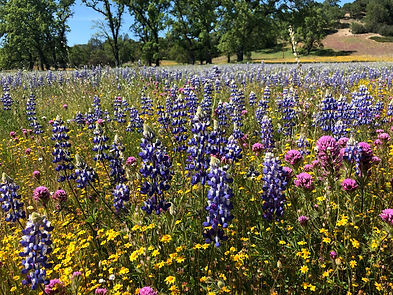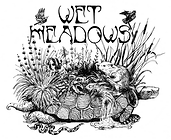Our Mission:
Watershed-Level Resiliency

At wet meadows, we believe that building resiliency in the Western U.S. starts at the local watershed level; that means developing a deep understanding and relationship with complex systems, meeting and connecting with our neighbors, establishing common ground, and focusing the scope of our efforts within the context of the watershed and greater ecoregion.
It is nearly impossible to make positive impact when the nature & scope of our work leaves us in a disassociated relationship with our lands. The last 2.5 centuries of historical land use and abuse, conjoined with the acquisition of our water by private/corporate entities and governments has disrupted our connection-to-source and limited our resiliency to navigate the environmental challenges we are faced with presently.
At Wet Meadows- the only path forward we see is to rehabilitate the co-benefits of ecological processes back onto the landscape through authentic, non-assumptive, and observant stewardship of our lands. We are witnessing an informed coalition of more people sleeping under stars, living by creeks, tending to ranches and finding connection to the source of their drinking water. We hope to contribute in this collective movement for radical land stewardship to deliver innovative and effective restoration solutions for communities to not only improve environmental quality, but also increase connection and interaction at the landscape level.
Unfortunately property ownership of large alluvial basins in the Western States is becoming increasingly cost-prohibitive as private interest groups assert control of increasingly scarce resources. Moreover, the number of low-valley areas that have not been hydraulically stagnated by large levees (agricultural/suburban/urban development) and/or spared from hydrologic disruption through convoluted public-private surface and groundwater storage projects are in extremely low reserves (see documentary below by National Geographic: Water & Power-A California Heist).
Our answer - the use of low-tech process-based restoration in Mediterranean mountain-meadow ecosystems and ephemeral wetlands to provide a simple, low-cost, and repeatable way to optimize our soil's natural ability to act as a sponge and hold on to soil-moisture via the slow release-of-water downstream through the drier months of the year.
Thus, attempting to re-establish the perennial nature of now ephemeral streams and rejuvenate watersheds one step at a time. Cherry-on top, just about every organization in the field of watershed management is joining together in essentially unanimous support of these "nature-based" restoration practices as there is growing scientific literature and data pointing towards the use of low-tech process-based restoration (see references).
Let's begin again to value the interconnectedness of our ecosystems to reclaim resiliency of our local watersheds. The scope of work includes all that exists from within the spaces of two-or-more ridgelines and concludes in a valley-bottom. Wet Meadows is committed to interacting with the whole gamut of things: trees, grasses, flowers, streams, wetlands, springs, pollinators, fish, turtles, squirrels, bears, songbirds, etc. and humans.
Essential-to-this, is respect of the upwards-of-10,000-years survived by California indigenous people groups through a resilient relationship to their lands. Let's re-imagine California watersheds more resilient than we now see them.
Our core ecosystem and restoration services include:
-
Revive lost springs
-
Return perennial flows
-
Create and improve wildlife habitats
-
Fire-harden landscapes
-
Create fire-resiliency
-
Attenuate storm flows
-
Increase base-flows
-
Reduce bank incision and head cuts
-
Hydrate floodplains and encourage habitat complexity
-
Reseed rainclouds
-
Encourage and connect wildlife habitat to support life forms that facilitated ecological processes and provide ecological services
Last updated: BCC, Aug. 7, 2025

Linked Reference Material
Textbook
Low-Tech PBR Manual: Wheaton JM, Bennett SN, Bouwes N, Maestas JD, Shahveridan SM. 2019. Low-tech methods of Process Based Restoration of Riverscapes: Design Manual. 1.0. Logan, UT: Utah State Univeristy. https://lowtechpbr.restoration.usu.edu/.
Articles
Effectiveness of Low-Tech PBR: Silverman NL, Allred BW, Donnelly JP, Chapman TB, Maestas JD, Wheaton JM, White J, Naugle DE. 2019. Low-tech riparian and wet meadow restoration increases vegetation productivity and resilience across semiarid rangelands. Restor Ecol. 27(2):269–278. doi:10.1111/REC.12869.
Watershed Degradation in the Western U.S.: Whol, E. 2013. Anthropocene (2): Wilderness is dead: Whither critical zone studies and geomorphology in the Anthropocene? https://doi.org/10.1016/j.ancene.2013.03.001
Film
Groundwater: National Geographic. 2017. Water & Power: A California Heist. Directed by Marina Zenovich
-
rent/buy/stream: https://www.imdb.com/title/tt6290202/
Fuels to Flows: Occidental Arts & Ecology Center. 2025. Gully Stuffing: "How To Turn Slash Into Beneficial Biomass"
Meadows: Plumas Corp. 2009. "Restoring Nature's Reservoirs".

